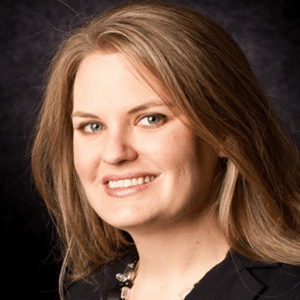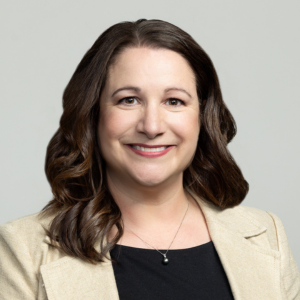Story of my life
// By Beth Thomas Hertz //
Photos and scrap books have long been used to help orient residents who have dementia, but life stories and associated memories are increasingly being used to improve the care delivered in many long-term care settings today. The idea is that the more the staff knows a resident’s personal details, such as where they’ve worked, where they’ve traveled, and who their loved ones are, the better they can understand who they are and find ways to comfort and engage them.
Several companies now offer services to help facilities and families put together a snapshot of a resident’s life that is easily digestible by the staff, often in conjunction with a more extensive memory book that includes anecdotes, photographs and more.
Jay Newton-Small saw the need for such services when she had to put her father into a facility as his Alzheimer’s disease worsened several years ago. The staff asked her to complete a 20-page questionnaire about his life, but she knew there was no way the staff could remember 20 pages of handwritten information for all 150 residents. Newton-Small, who was working as a full-time journalist at the time, offered to write up a story about her father’s life instead.
The staff agreed and she believes the resulting narrative helped his caregivers bond with him.
“My father had spent 20 years working in development in Africa with United Nations and two of his caregivers are actually from countries where he had worked. They became his champions. They would sit for hours and show him photos of Ethiopia and Chad and he loved it,” she said.
“Having all that empathy from his caregivers really helped redirect him when he got aggressive. Within a few months of him being admitted, his aggression pretty much ended. It made a huge difference in his care,” she said.
This experience is what led her to ultimately launch her company, Memory Well. She recently left her job at Time magazine to pursue it full time with two others. Memory Well works with about 100 writers across the country to interview a resident and/or their family members, in person or on the phone, and then craft an article of about 500 words that highlights key points of the person’s life. These stories are then posted on the company’s web site along with supporting material such as favorite songs, videos, arts and readings.
Memory Well doesn’t produce a print memory book but does offer the option to print off a one-page PDF of highlights that caregivers can read quickly. Many facilities hang these where all visitors can see them, she said. “It builds a great sense of community for everyone as it helps people get to know each other and find commonalities and connections,” Newton-Small said.
Facilities also can use the information to develop personalized engagement programs, she added. For example, if you learn that 10 women love to knit, a knitting activity can be created for them. If you learn two men living in different parts of the home served in Korea, you might bring them together to watch M*A*S*H or reminisce about their service, she said.
The company is looking into translating stories into other languages or offering podcasts of some the stories to help make them even more accessible to caregivers.
“We understand that a lot of caregivers may not be digitally savvy or have the time to look at everything on the Web site, so we want to make it as easy as possible,” she said.
Another company, Ohio-based LifeBio, was started by Beth Sanders, a former English major who saw the early stages of the person-centered care movement develop but noted that it was mostly focused residents’ physical needs. She didn’t think enough was being done to help caregivers really get to know the residents, especially early in the course of their dementia, before their ability to share memories slipped away.
She believed caregivers wanted this information so she decided to offer a service to help.
She laughs now to recall that LifeBio started by suggesting every resident or family member answer 200 questions for the company to use for creating their autobiography. She quickly learned that was too much, so she cut it down to about 70 questions. Upon further refinement, she has found that 10 to 12 well-asked questions can achieve a great outcome.
“Even if we don’t gather all the details of a person’s life, we are going to get a lot,” she said.
The questions used today include asking about the resident’s hometown, what they think was the greatest invention in their lifetime, where they went to school and what type of work they did. They also are asked about their favorite Bible passage or for some key advice they once received that changed their life.
“Sometimes the answers surprise you. We once asked a former CEO for his greatest accomplishment and he said teaching his grandson to read,” Sanders said. “These are simple questions, but they are not always asked. Or they may be asked, but then they can be hidden away in a file that is not visible to the direct care staff.”
Gathering answers typically takes about six hours per resident although some people will choose spend a lot more time on it, Sanders said. Any staff member can do it—a nurse, an activities aide or an occupational therapist are a few examples she cites—but Sanders recommends facilities be creative if the staff just doesn’t have time.
“Ask yourself who does have time for that in your community. Churches? College kids? Most high school kids need community service hours today,” she said “Not all volunteers want to do crafts or bingo.”
The answers that are gathered can be input directly into an electronic template or they can be recorded with pen on paper. Either way, they are forwarded to LifeBio’s staff, along with photos, and converted it into a memory book. The books will vary in length, she said. A person with advanced dementia and minimal family input might only get a very short book, for example. But Sanders still sees value in that. “Even if it is a short book, their name is on it. It’s done, it’s bound, it’s shipped back, and they have a book. That is a life-affirming thing.”
LifeBio also creates one-page summaries like Memory Well and Sanders finds these get lots of use. For example, at one facility, the nurses bring one or two at a time to their meetings and read them together. They then discuss what conversations they should have with that resident or what activities he or she would enjoy.
“This helps caregivers try to engage, which is better than asking ‘How was breakfast?’ or taking about the weather. We are aiming for deeper engagement and using that knowledge to deliver the best possible care,” she said.
She recalls a college professor telling her that when Shakespeare wrote his plays, he became immortal. She said she hopes writing down memories helps bring a sense of immortality to her clients as well.
Cameron Graham, founder and CEO of Storii, another company that offers life memory services to the senior care industry, got the idea for his company in 2014 when he was hospitalized with kidney failure. While there, he saw an older man with dementia who struggled with where he was and was difficult with his nurses. However, when his granddaughter came to visit and brought photos from his life, Graham noticed that the man calmed down and got along better with his caregivers.
“I thought that there should be an appropriate way to take what was happening there and really help people. And sitting in my ward watching Netflix in my iPad, I knew I could use technology to do this,” he said.
Graham described StoriiCare, based in Scotland, as the company’s life story and activity tracking platform. Families connect to resident profiles through the Storii app and can add life story content from anywhere. They can also view care staff interactions with their loved ones as reports and care plans can be added to the platform. Government inspectors can access these reports as well, which some families find reassuring.
Graham said caregivers who use Storii can do it individually or in group settings; either way, residents are encouraged to reminisce about life story content that has been uploaded by their families. They often listen to music that they enjoy at the same time. Sessions are automatically tracked.
“We’ve had fantastic results and feedback from residents, families and also staff, who enjoy using the new technology and bonding with those they care for in a way that previously was not possible,” he said.
Cost
Most of these services are paid for by the facilities although they are will work with individual families that are interested.
Memory Well currently charges $450 per article that it produces, with discounts for bulk rates. Newton-Small said they are thinking of changing to a subscription model for facilities.
LifeBio’s costs are tiered, based on the size of the community. A small community or a larger one that only wants to use the services for a small subgroup of memory residents may pay about $2,000 a year to cover less than 50 people. A very large campus could be $5,000-$10,000, she said. LifeBio also offers “a la carte” options, such as providing blank versions of its memory books for use as a conversation starter for visiting families.
Storii charges providers depending on how many resident profiles will be added to the platform, Graham said. For 1 to 25 residents, the cost is $2,500 per year. For 26-50, it is $4,000 per year. For larger populations, he encourages facilities to contact him to discuss rates.
Timing is key
While admission to a long-term care facility is typically the time that these memory projects are initiated, Newton-Small has seen facilities that offer multiple levels of care express an interest in doing it while the resident is still in independent or assisted living, and is therefore better able to participate.
“When people transition into different areas of a facility, they have to meet all new caregivers, and having this done really helps with that transition,” she said.
Sanders finds that the information gathering often happens a little after admission, typically as part of activities staff work or family events but agrees that admission is probably a better time for the clinical team to make use of it. “We are moving from, ‘Oh, what a nice thing to do’ to ‘We really need this information,’” she said.
I Advance Senior Care is the industry-leading source for practical, in-depth, business-building, and resident care information for owners, executives, administrators, and directors of nursing at assisted living communities, skilled nursing facilities, post-acute facilities, and continuing care retirement communities. The I Advance Senior Care editorial team and industry experts provide market analysis, strategic direction, policy commentary, clinical best-practices, business management, and technology breakthroughs.
I Advance Senior Care is part of the Institute for the Advancement of Senior Care and published by Plain-English Health Care.
Related Articles
Topics: Alzheimer's/Dementia , Articles , Executive Leadership











